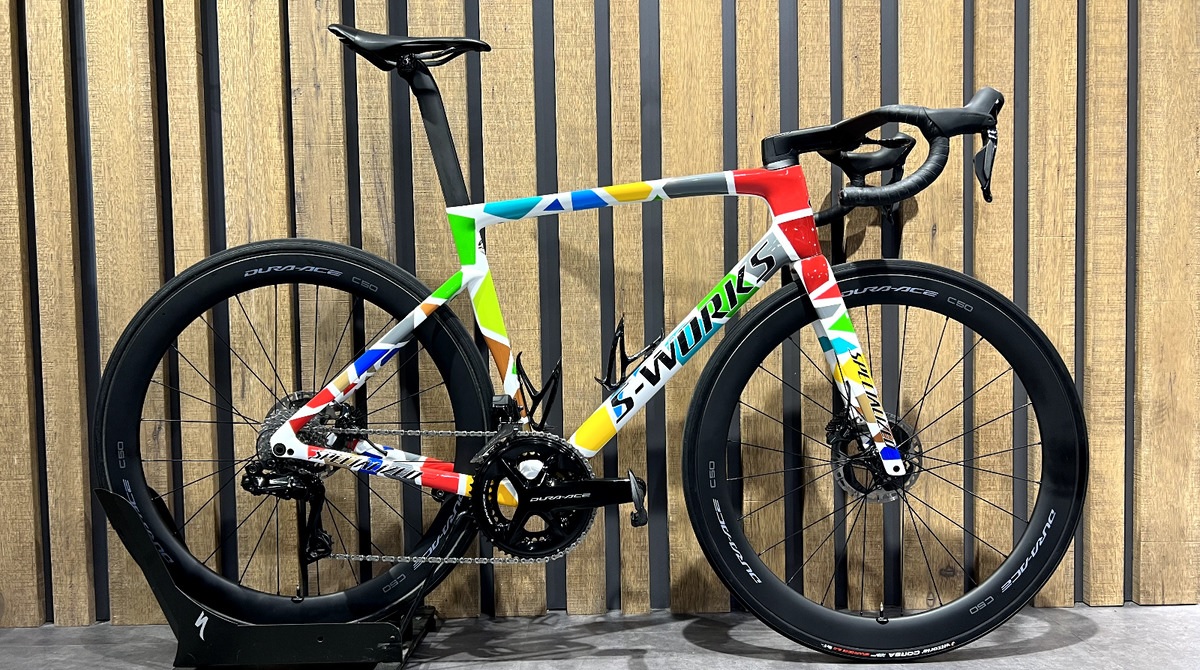
Granfondo Loano 2026 Nutrition and Supplementation: A Complete Program of Integration and Diet – Tips, Secrets, and a Step-by-Step Guide
Granfondo Cycling: Explore the Ultimate Endurance Challenge in 2025 & 2026
Granfondo Loano 2026 Nutrition and Supplementation: A Complete Program of Integration and Diet – Tips, Secrets, and a Step-by-Step Guide
Tackling a Granfondo like Loano isn't just about legs and training; nutrition and supplementation play an equally crucial role. A well-planned nutritional strategy can make the difference between an exceptional performance and a difficult experience. This comprehensive guide will provide you with a step-by-step program, practical advice, and the secrets to optimally fuel your body before, during, and after the Granfondo Loano.
The Basics of Cyclist Nutrition
Before delving into the specific details for the Granfondo, it's essential to understand the pillars of healthy eating for a cyclist. Your body needs a balance of macronutrients (carbohydrates, proteins, fats) and micronutrients (vitamins and minerals) to sustain intense training and promote recovery.
Carbohydrates: The primary energy source. They are divided into simple (fruits, sugars) and complex (pasta, rice, whole grain bread, cereals). Complex carbohydrates should be prioritized for a gradual energy release.
Proteins: Essential for muscle repair and building. You'll find them in meat, fish, eggs, legumes, and dairy products.
Fats: Provide long-term energy and are crucial for the absorption of fat-soluble vitamins. Prioritize unsaturated fats (olive oil, nuts, avocado).
Vitamins and Minerals: Catalysts for metabolic processes, fundamental for overall health and performance. Fresh fruits and vegetables are rich in them.
Pre-Race Nutrition and Supplementation Program (The Crucial Week)
The week leading up to the Granfondo is critical. The goal is to maximize muscle and liver glycogen stores and ensure optimal hydration.
Day Minus 7 to Minus 3: Gradual Carbohydrate Loading and Hydration
Begin a slight increase in complex carbohydrate intake.
Nutrition:
Increase the portion of complex carbohydrates (pasta, rice, potatoes, whole grain bread, cereals) by 10-15% at each meal.
Maintain an adequate intake of lean proteins (chicken, fish, legumes).
Slightly reduce fat and fiber intake to minimize the risk of gastrointestinal problems.
Avoid fried, heavily seasoned, or unusual foods that might disturb digestion.
Hydration:
Drink plenty of water throughout the day, not just during workouts. Aim for 2.5-3 liters per day.
Consider adding electrolyte-containing beverages if the weather is hot or if you sweat a lot.
Day Minus 2: Glycogen Maximization
This is the day when glycogen stores should be at their peak.
Nutrition:
Breakfast: Hearty and based on complex carbohydrates (e.g., porridge with fruit, toast with jam).
Lunch and Dinner: Meals rich in easily digestible complex carbohydrates (e.g., plain rice or pasta with light sauces, boiled potatoes). Further reduce fiber, leafy greens, legumes, and whole foods.
Snacks: Fruits (e.g., bananas), rice cakes, honey.
Hydration: Continue to drink plenty.
Day Minus 1 (Race Eve): Lightness and Confirmation
The goal is to maintain full reserves without feeling heavy.
Nutrition:
Breakfast and Lunch: Similar to Day Minus 2, but with slightly reduced portions to avoid bloating.
Dinner: Light and easily digestible meal, preferably consumed 3-4 hours before going to bed. Opt for plain pasta or rice with a simple sauce (e.g., fresh tomato), or boiled potatoes with a small portion of chicken breast/fish. Absolutely avoid foods that you know are difficult for you to digest.
Hydration: Last efforts to achieve optimal hydration.
Race Day: Fueling for Performance
This is the time to put what you've learned into practice.
Breakfast (3 hours before start):
Food: Should be rich in easily digestible complex carbohydrates, low in fat and fiber.
Examples: Porridge with water (or skim milk/plant-based milk) and a teaspoon of honey/jam, toast with jam, rice cakes, plain boiled rice, ripe banana.
Quantity: Make sure to consume at least 1.5-2 grams of carbohydrates per kg of body weight.
Hydration: Drink 500 ml of water or an isotonic drink.
Pre-start (Last hour):
Hydration: Sip 200-300 ml of water or isotonic drink.
Supplementation:
Carbohydrates: Gel or fast-absorbing energy bar (20-30g of carbohydrates) 15-30 minutes before the start.
Caffeine (optional): A small dose (e.g., 100-150mg) if you're accustomed to it, for a stimulating effect.
During the Race: "On-The-Go" Supplementation Strategy
The goal is to maintain constant energy and hydration levels. Timing is key.
Hydration:
Drink regularly, in small sips, every 10-15 minutes. Don't wait until you're thirsty.
Alternate water with isotonic drinks (with carbohydrates and electrolytes) in your bottles.
Aim for 500-1000 ml of fluids per hour, depending on weather conditions and your sweat rate.
Carbohydrates:
Consume 60-90 grams of carbohydrates per hour of activity, distributed regularly every 20-30 minutes.
Energy gels: Quick to consume, practical. Take them with water to aid absorption.
Energy bars: Great for a more solid energy source, but make sure they are easy to chew and digest.
Fruit: Ripe bananas (easy to digest) or dates can be an excellent natural alternative.
Mix: Vary your sources to avoid monotony and digestive issues.
Electrolytes: If your isotonic drink isn't enough or if you sweat a lot, you can supplement with mineral salt tablets dissolved in water.
Post-Race Recovery: The Key to the Future
Recovery begins as soon as you cross the finish line. The goal is to replenish glycogen stores and repair damaged muscle tissue.
Within 30-60 minutes (The "Anabolic Window"):
Carbohydrates and Proteins: Consume a mix of fast-absorbing carbohydrates and proteins (3:1 or 4:1 carbohydrate/protein ratio).
Examples: Recovery shake (skim milk + banana + protein powder), Greek yogurt with fruit, honey and jam sandwich, protein-energy bar.
Hydration: Continue drinking water and electrolyte-containing beverages.
Next 2-4 hours:
Complete meal: Consume a balanced meal with complex carbohydrates, lean proteins, and vegetables.
Examples: Rice or pasta with chicken/fish and vegetables, baked potatoes with eggs/legumes.
Hydration: Continue with hydration.
Tips and Secrets for Winning Nutrition
Test everything in training: Never experiment with new foods or supplements on race day. Test everything, from bars to gels to drinks, during long rides.
Listen to your body: Every athlete is different. Learn to recognize your body's signals and adapt your strategy accordingly.
Plan your aid stations: Study the Granfondo Loano route and identify the aid stations. Decide in advance what to take and what to carry with you.
Variety: Don't rely on just one type of supplement. Vary between gels, bars, and solid food to avoid digestive problems and boredom.
Caffeine: If you use it, test your body's reaction. It can be a valuable aid, but in excess, it can cause nervousness or gastrointestinal issues.
Pre-start hydration: In the hours before the race, sip fluids to avoid needing to urinate too often.
Salt: If you sweat a lot and see white stains on your jersey, you might need to supplement more salt.
Specific Supplements (On an Individual Basis and with Professional Advice)
While a balanced diet is the foundation, some supplements can support performance and recovery. Always consult a doctor or sports nutritionist before taking any supplements.
Maltodextrins/Fructose: Specific carbohydrate sources for drinks during activity.
BCAAs (Branched-Chain Amino Acids): Can help reduce muscle fatigue and promote recovery.
Creatine: More useful for short, intense efforts, but can also have benefits for climbing strength.
Beta-Alanine: Can help buffer lactic acid, delaying fatigue.
Mineral Salts: Sodium chloride, potassium, magnesium, and calcium are fundamental for muscle function and hydration.
Conclusions
Nutrition and supplementation are indispensable components for a successful Granfondo. Careful planning before the Granfondo Loano, intelligent management of nutrients during the race, and effective recovery will allow you not only to complete the route but to do so to the best of your abilities, enjoying every kilometer of this splendid cycling adventure. Prepare your body with the same attention you prepare your bike, and success will be within your reach!
